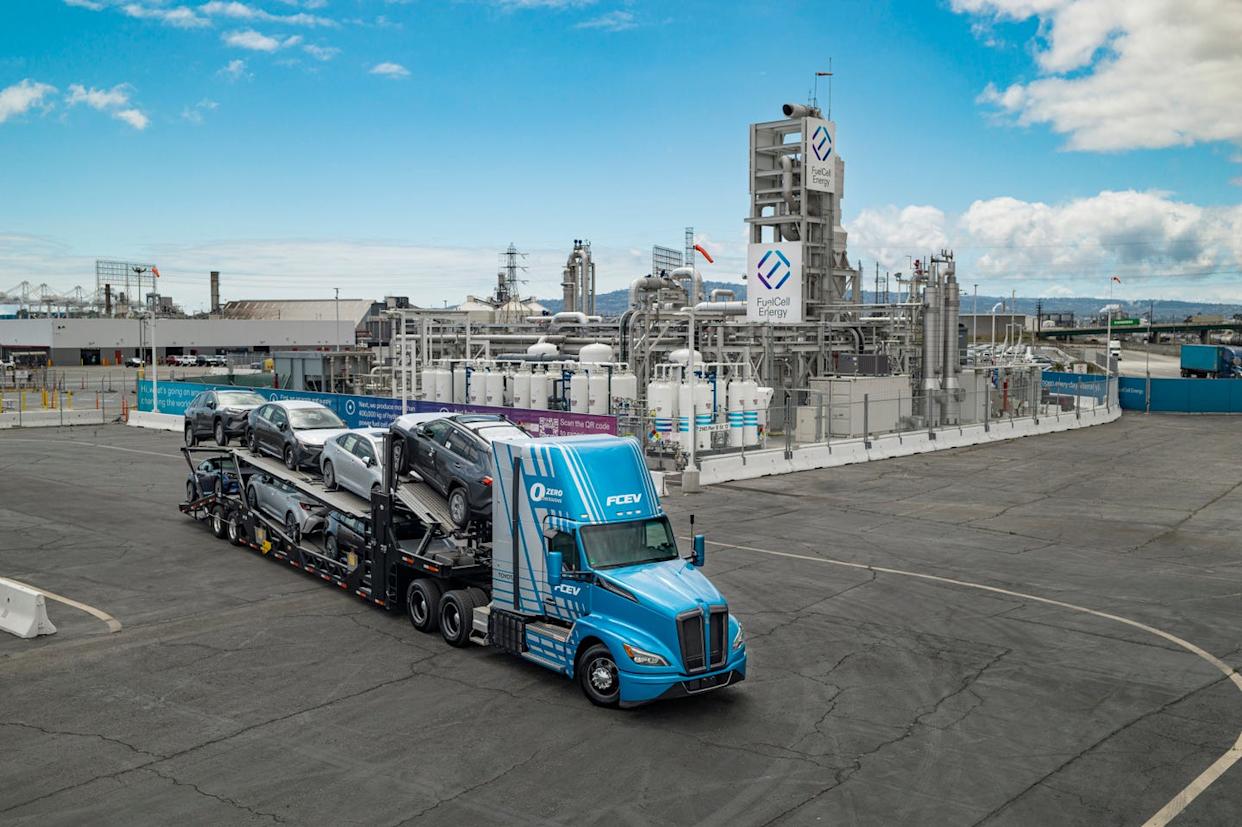
Hyundai has deployed a fleet of heavy-duty fuel-cell trucks while Toyota plans to convert Class 8 heavy-duty trucks operating out of the Port of Long Beach to its latest generation of hydrogen power.
Toyota and Air Liquide will build a new station in Ontario, California, to store cryogenically cold liquid hydrogen. The station will use a fueling system that can refill a truck faster than via diesel infrastructure.
Meanwhile, Toyota’s Mirai fuel-cell sedans have been run through Long Beach port since 2015. Through 2023, Toyota sold 14,105 Mirais in the US, according to CarFigures.
The switch to hydrogen power for California’s port trucks is gathering steam.
Last year, FirstElement Fuel opened, at the busy Port of Oakland, what it calls “the world’s first commercial truck stop for hydrogen vehicles, with 10 times the capacity of any previous station.”
Hyundai deployed a fleet of 30 XCIENT 6x4 cab-over tractors with 450 miles of range to fuel there for “drayage” duty, moving shipping containers.
Toyota, which fielded the Mirai hydrogen car in southern California to a less than overwhelming public response, is not by any means turning sour on fuel cells.
The automaker plans to convert the logistics-fleet Class 8 heavy-duty trucks operating out of the Port of Long Beach to its latest generation of hydrogen power.
The trucks, with Toyota’s Gen 3 FC fuel-cell systems and the capacity to go 600,000 miles without major servicing, will cover routes to Toyota parts centers in Ontario, California, and San Diego.
Hydrogen Can Refill Faster Than Diesel
There will be fueling both at Long Beach and at the North American Parts Center California in Ontario.
Toyota is working with industry veteran Air Liquide to build a new station in Ontario that will store cryogenically cold liquid hydrogen (it liquifies at -423 degrees Fahrenheit, with more energy density).
The station will use a fueling system that can refill a truck faster than via diesel infrastructure. The hydrogen in this case will come from Air Liquide’s mobility plant in North Las Vegas, Nevada.
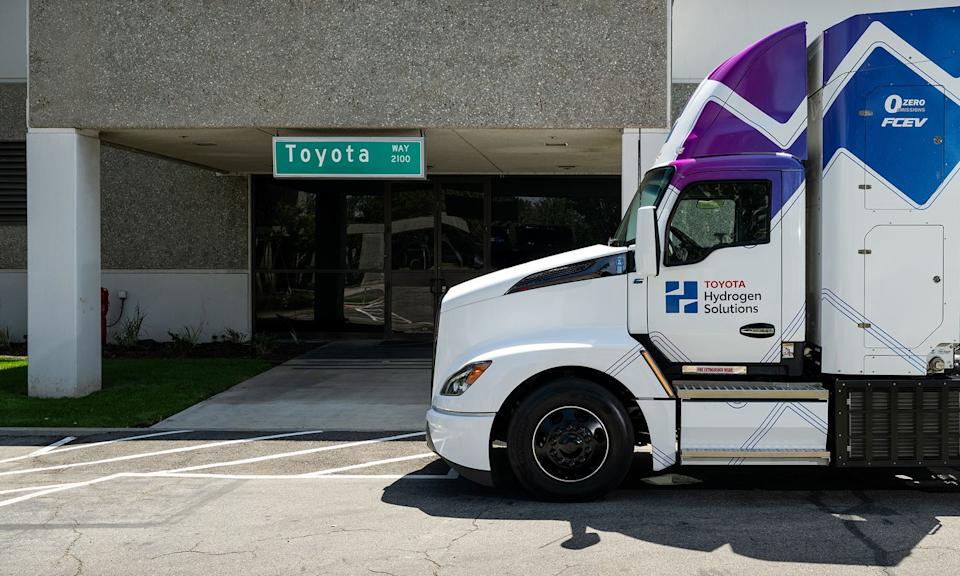
“The program is moving along pretty well,” Jacob Brown, Toyota mobility communications manager, told Autoweek.
“The hydrogen-powered Class 8 trucks are in development, and validation is under way. It remains a priority to decarbonize our commercial fleet, especially at the Port of Long Beach and our regional distribution center in Ontario, California,” Brown said.
“At Long Beach, you can smell the diesel in the air, and this program hopefully will be the start of alleviating the soot and emissions. It takes a village of collaboration to decarbonize ports and fleets, but we believe we have the technology to do it.”
Tri-Gen Waste-to-Energy Plant
And not all the fuel cells are mobile. Toyota also partnered with Connecticut-based FuelCell Energy to build, at the Port of Long Beach (second busiest in the US), a new vehicle processing center with fuel-cell power.
The Long Beach center is Toyota’s largest vehicle processor in North America, capable of moving more than 200,000 Toyota and Lexus vehicles off ships annually. The center also is where accessories get added, from mud guards to TRD wheels.
The processing facility had been in several different buildings over 117 acres, with 250 employees. The key to the new construction is a waste-to-energy plant called Tri-Gen.
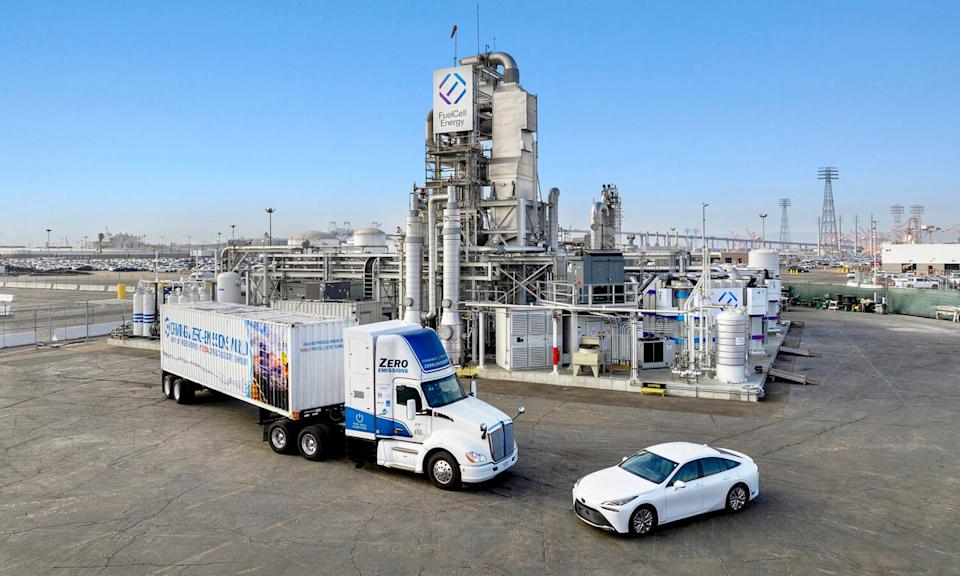
The system from FuelCell Energy, which was dedicated last year, uses biogas to produce renewable energy, water, and renewable hydrogen. Excess electricity goes into the local grid, and water to a car wash on the property.
The biogas (which is a potent greenhouse gas when released to the atmosphere) comes from food and municipal waste located 100 miles away in Victorville, California, and arrives via pipeline.
“It’s seamless,” said Jeffrey White, a senior manager at Toyota Logistics Services Long Beach.
When Will Trucks Hit the Road?
“Hydrogen supply issues have been a challenge for the last several years, so being able to produce it on site provides some consistency and reliability,” White said. “We also have hydrogen for the trucks. It has been a game changer.”
The Gen 3 FC-equipped trucks store and use hydrogen in its gaseous state, Brown said, but the Air Liquide facility in Ontario stores it as liquid before refilling, and Long Beach stores it as gas. Brown declined to offer a ballpark date for when the trucks will hit the road, because “timelines slip.”
An attached light-duty hydrogen station gets enough hydrogen from the plant to fill all the fuel-cell Mirais arriving at the port.

The Mirais have been run through Long Beach since 2015, but it’s a small-volume model: Through 2023, Toyota sold 14,105 Mirais in the US, according to CarFigures.
The number would likely be higher with a more robust light-duty hydrogen fueling infrastructure, especially outside California. But powering heavy-duty trucks with hydrogen is proving a more successful application for fuel cells.
Is hydrogen a transportation energy source that will ever be mainstream? Please comment below.
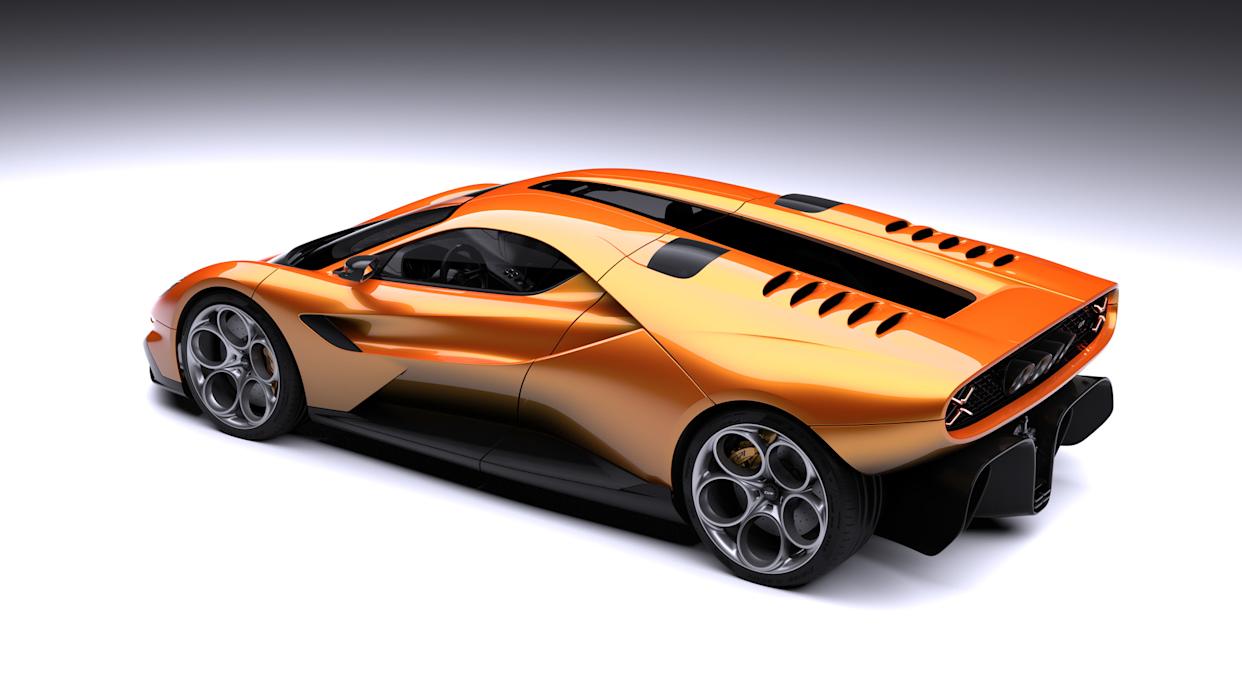
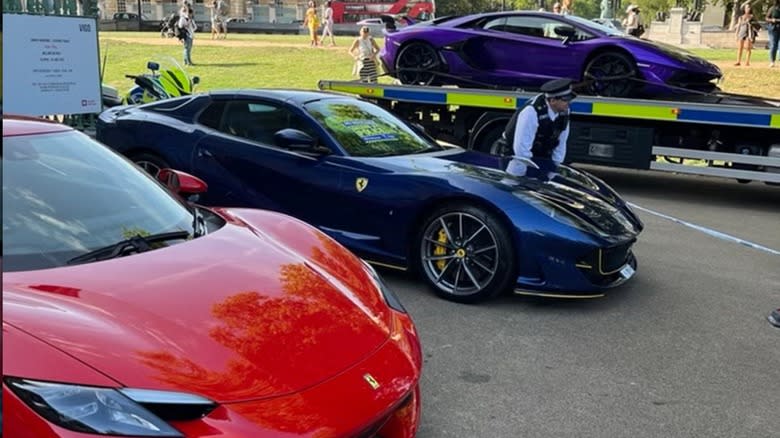
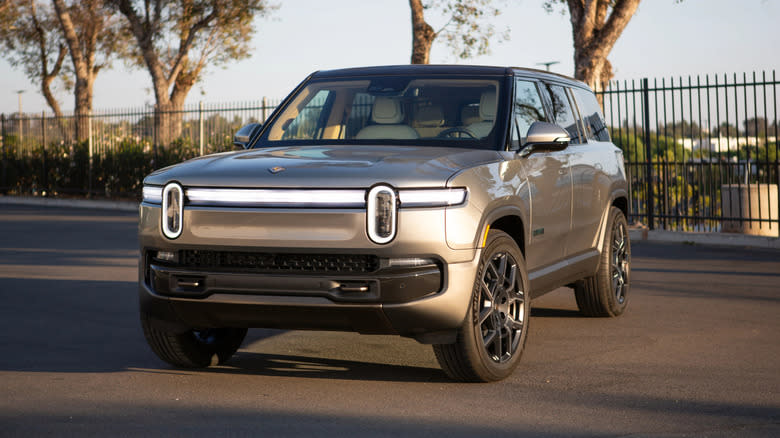
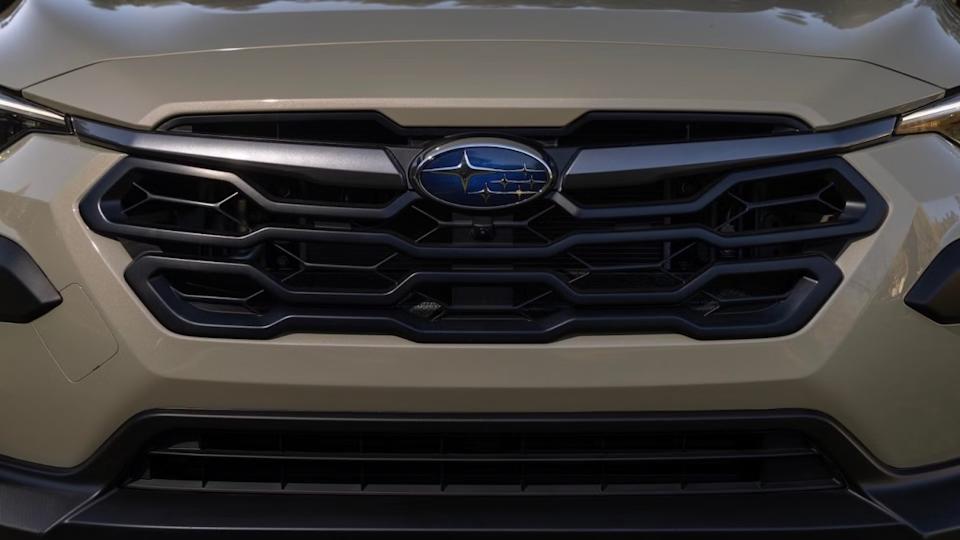
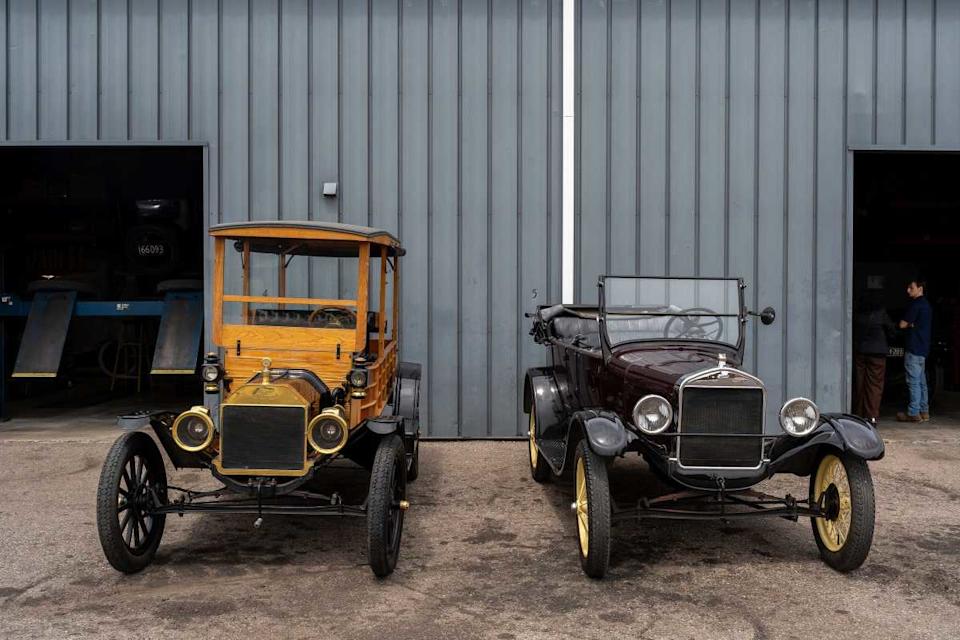
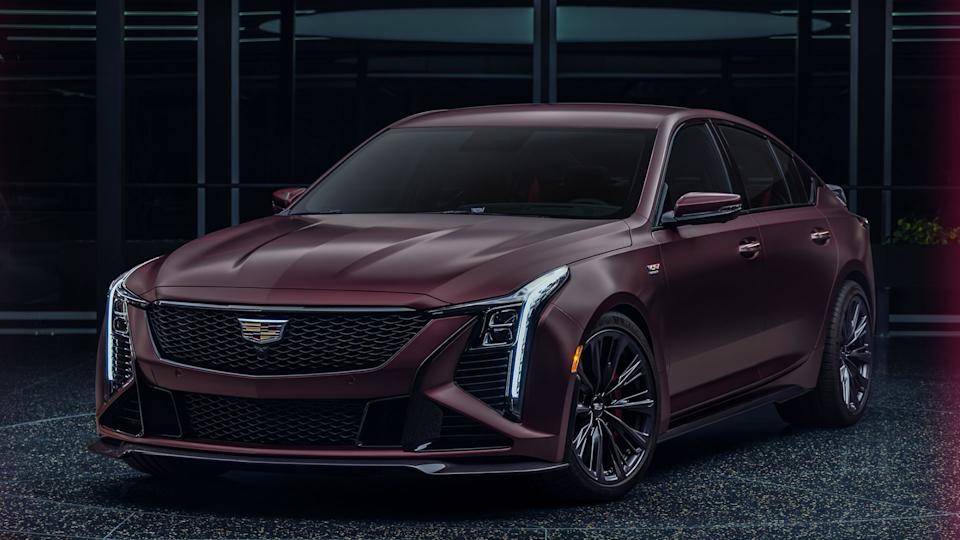
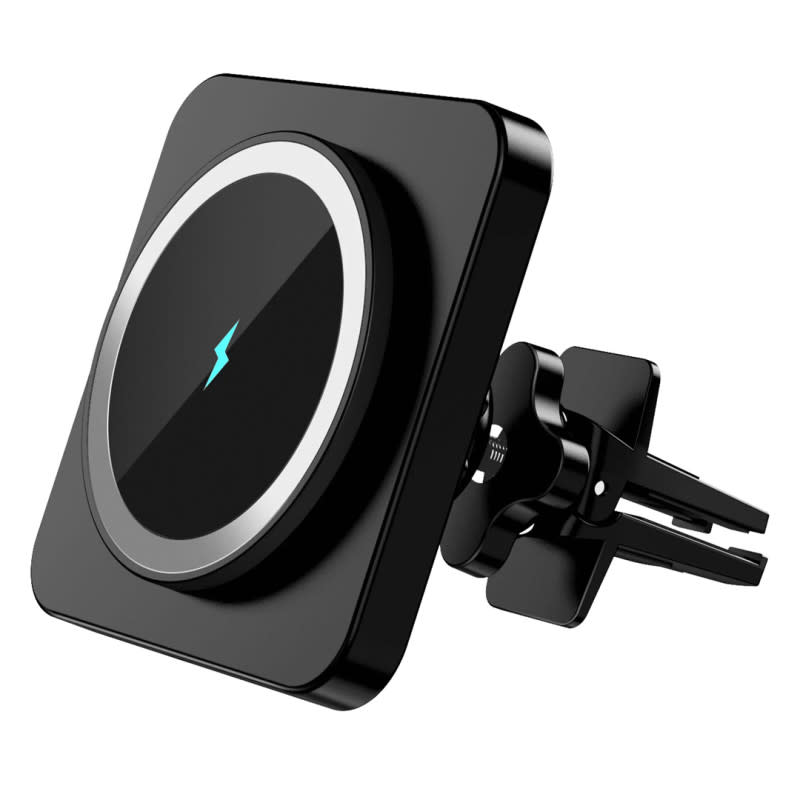
Comments